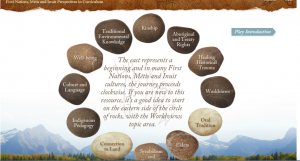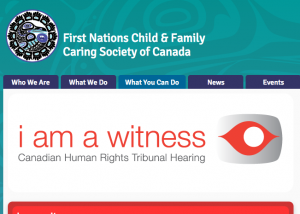The list of resources below continues my research into Indigenous spirituality and its incorporation into education. A more recent theme found is the link between spiritual strength and resiliency among Indigenous people.
- Fleming, J., & Ledogar, R. J. (2008). Resilience and Indigenous spirituality: A literature review. Pimatisiwin, 6(2), 47-64. Retrieved from https://www.ncbi.nlm.nih.gov/pmc/articles/PMC2956755/pdf/nihms762.pdf
- This article discusses the uniqueness of Indigenous spirituality in that it is closely bound to cultural practices and daily living. Therefore, when researching the topic of Indigenous spirituality and resiliency, a holistic approach is needed.
- One conceptual framework suggested is that of ‘enculturation’ or the degree to which spirituality is integrated within the culture which, in turn, leads to protective factors, such as better academic achievement and lower substance abuse.
- Another framework is ‘cultural spiritual orientation’ which is also predictive of protective factors against substance abuse and suicide, but which can be distinguished from the specific spiritual beliefs of the tribe in question.
- The goal of the research is to enable communities to use their own cultural and spiritual traditions to promote resilience.
- Grieves, V. (2009). Aboriginal spirituality: A baseline for Indigenous knowledges development in Australia. The Candian Journal of Native Studies XXVIII(2), 363-398. Retrieved from http://www3.brandonu.ca/cjns/28.2/07Grieves.pdf
- This article discusses how essential it is to include spirituality in any study looking at Indigenous knowledge. Spirituality is the basis for the cultural concept of ‘personhood’ which involves their relationship to others and to the world. It is intricately tied to the notion of well-being and thus must be included in any discussions of healing from colonization.
- Ontario Human Rights Commission. (2017). Policy on preventing discrimination based on creed: 11. Indigenous spiritual practices. Retrieved from http://www.ohrc.on.ca/en/policy-preventing-discrimination-based-creed/11-indigenous-spiritual-practices
- This website discusses the duty to accommodate Indigenous spiritual beliefs and practices under the Ontario Human Rights Code.
- It begins by discussing the historical context of the suppression of Indigenous spirituality due to colonialism and the desire to prevent any further denigration of Indigenous spiritual practice.
- The site discusses the legal framework which protects the rights of Indigenous people to practice their spiritual traditions.
- It then goes on to describe some ceremonial practices and customs, including the scheduling of such events and the need for access to sacred sites and objects.
- Stevens, N. (2010, November.) From the inside out: Spirituality as the heart of aboriginal helping in [spite of?] western systems. Native Social Work Journal, 7. Retrieved from https://zone.biblio.laurentian.ca/bitstream/10219/389/1/NSWJ-V7-art8-p181-197.pdf
- This piece discusses the reclamation of traditional spiritual practices within Indigenous communities and specifically how spiritual strength fosters general resiliency.
- It is written from a social worker’s perspective on how to honour and integrate the spirituality of Indigenous clients.
- Stevens sees spirituality as an important component of healing for everyone, but for Indigenous peoples, it is also central to identity, purposefulness and resilience which can be seen to be manifested in their daily living.
- Wane, N. N., Manyimo, E. L., & Ritskes, E. J. (Eds). Spirituality, Education & Society: An Integrated Approach. Toronto, ON: Sense Publishers. Retrieved from https://www.sensepublishers.com/media/973-spirituality-education-society.pdf
- In this book, each chapter is filled with stories of how a limited recognition of spirituality decreases the richness of learning experiences, especially for those who see the world holistically, wherein everything is interconnected.
- In addition, an absence of spirituality in education, under the auspices of ‘rationality’, undermines the knowledge foundations of Indigenous societies and belies the fact that we are connected to each other and the world in subjective ways.


